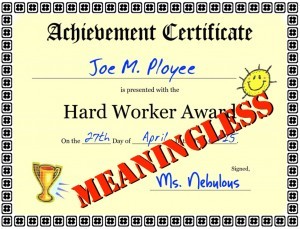Google’s ranking algorithm is constantly changing. Something that worked last year might get you huge penalties this year. Techniques that you relied on (and were touted by talking heads) just a few seasons ago can be disastrous for your website today.
So how you know if you’re committing a cardinal sin of SEO and optimization? How do you know if your website or content is repellent to Google’s algorithm?
We’ve got three big things about Google’s algorithm (and how it assesses your content and site) that you might not know.
Pogo-Sticking is the Bounce Rate’s Evil Cousin
Also known in the SEO world as “Return-to-SERP,” pogo-sticking is one of the biggest indicators of searcher dissatisfaction.
So what is pogo-sticking, you ask?
According to Neil Patel, it’s the act of pogoing back and forth between an SERP and the content it presents:
“Have you ever searched for a particular topic in Google, clicking on the first result in the top 10 only to be completely dissatisfied with what you found there? You probably quickly clicked the “back arrow” and went back to either search for another term or to click on a different web page.
That’s pogosticking — where the user is jumping back and forth between the SERPs and content pages, because their needs haven’t been met.”
Pogo-sticking is slightly different from the bounce rate in that it signifies a clear dissatisfaction with a webpage’s content; the user isn’t spending time on the page and then clicking away. They are actively choosing another website from the SERP to get the information they’re looking for.
A high rate of pogo-sticking is bad news bears when it comes to ranking in Google’s algorithm, where user satisfaction is the king of the hill. If users are consistently finding and clicking your website, but immediately returning to the SERP and choosing another result, you’re either not presenting information relevant to their search term or your page’s design and layout is bad for user experience. Or both.
You need to address the issue.
Analyze navigation paths through your analytics tools, and tweak your badly-performing pages so that they offer clearer, more concise information, above the fold and in an accessible design.
Guest Posting: You Must Proceed With Caution
It’s been over 2 years since Matt Cutts debuted his famously-scathing blog, “The Decay and Fall of Guest Blogging for SEO.”
Since that time, brands have been forced to address (and often change) their own guest blogging practices.
In 2016, here’s what you should know:
- Don’t accept guest bloggers who request backlinks to toxic sites. If someone approaches your company with a strong piece of content, in search of a guest blogging opportunity, it’s important to ask what they expect in return for their content. Most of the time, a simple backlink is all they want. However, if that backlink is to a toxic, low-quality, irrelevant site, you’re doing yourself no favors (and are actually hurting your credibility) by featuring them.
- Check DA (Domain Authority) on all the websites you’re pursuing for backlinks. Do the same for the websites of guest bloggers pursuing you for backlinks. If a website has a domain authority of 20 or less, they offer no value to your website and probably have serious on-page SEO and user satisfaction issues.
- Don’t accept guest posts that feature content that is irrelevant to your niche. Google crawls and indexes your entire website and its content. Content and keywords that are unrelated to your niche will weaken your site’s authority within queries related to that niche.
- This handy tool from Moz will allow you to check a website’s domain authority before including them in your link building profile.
Are You Over-Optimizing? Stop…Right Now
“But optimizing is good!” you might say.
And yes, it is good.
But, much like pizza, exercise or drunken online shopping, too much of it can be bad.
Over-optimization can be as simple as bad linking techniques or as annoying as keyword stuffing. No matter what form it takes, it’s best to avoid it altogether.
Some big examples of over-optimizing?
According to Kissmetrics’ recent blog on this fascinating topic, some of the biggest culprits are keyword stuffing, keyword-rich anchors for internal links, and using multiple H1s on a page.
Remember: Google values natural, informative writing. And now that they have their most sophisticated algorithm ever, simply loading a page with keywords you want to rank for doesn’t cut it. You have to actually offer value in your content. If you don’t, Google will know. And they won’t let your pages show up in SERPs.
Consider these fascinating facts about SEO next time you write a blog post, optimize your web pages or pursue another website for backlinks. You might just escape some of Google’s wrath.
Digital & Social Articles on Business 2 Community(103)




